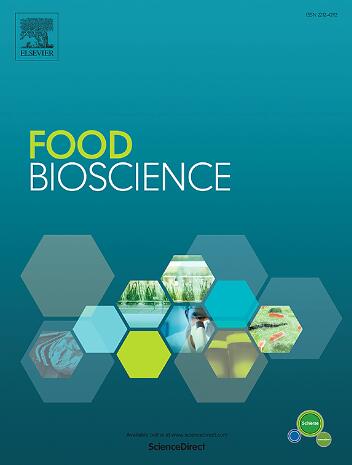Sustainable and contemporary approaches to explore the nutritional and processing perspectives of buckwheat: Current evidence and prospects
IF 4.8
1区 农林科学
Q1 FOOD SCIENCE & TECHNOLOGY
引用次数: 0
Abstract
Buckwheat (BW) is widely cultivated across hilly region of China and other countries in Asia and Europe. Among various cultivars’ Common buckwheat (CB) and Tartary buckwheat (TB) are of great significance due to their excellent phytochemical profile. Whole BW is a potent source of high-quality protein with balanced amino acids, vitamins, minerals, dietary fiber, polyphenols and bioactive peptide, making BW fractions a potential functional ingredient in food formulations. However, certain factors such as antinutrients (ANFs), allergenic proteins, dark color and bitter taste limits BW commercialization. To overcome some of these issues, BW is subjected to different treatments such as germination, soaking, hydrothermal treatments, thermal processing, and extrusion that improves nutrient bioavailability, mitigates ANFs and enhances organoleptic attributes. Furthermore, BW bran and hulls retain free and bound polyphenols, can be extracted using green technologies with high extraction output. BW supplementation and substitution in gluten free formulations confers anti-oxidant, anti-inflammatory, antidiabetic, hypotensive, and hypolipidemic activities with improved techno-functional properties. Hence, BW can be suggested as a future of the gluten-free food product industry. This review highlights the phytochemical profile of BW cultivators, their stabilization and extraction methods. It also explores therapeutic potential of BW as functional food and influence of BW supplementation on organoleptic characteristics of food formulations.

荞麦(BW)在中国丘陵地区以及亚洲和欧洲其他国家广泛种植。在各种栽培品种中,普通荞麦(CB)和鞑靼荞麦(TB)因其出色的植物化学成分而具有重要意义。全荞麦是优质蛋白质的有效来源,含有均衡的氨基酸、维生素、矿物质、膳食纤维、多酚和生物活性肽,因此全荞麦馏分是食品配方中一种潜在的功能性成分。然而,抗营养素(ANFs)、过敏性蛋白质、深色和苦味等因素限制了 BW 的商业化。为了克服这些问题,BW 需要经过不同的处理,如发芽、浸泡、水热处理、热加工和挤压,以提高营养物质的生物利用率,减少 ANFs 并改善感官特性。此外,BW 的麸皮和谷壳保留了游离和结合多酚,可使用绿色技术提取,提取率高。在无麸质配方中补充和替代 BW 可提高抗氧化、抗炎、抗糖尿病、降血压和降血脂活性,并改善其技术功能特性。因此,BW 可以说是无麸质食品行业的未来发展方向。本综述重点介绍了 BW 栽培植物的植物化学成分、其稳定和提取方法。它还探讨了 BW 作为功能性食品的治疗潜力,以及补充 BW 对食品配方感官特性的影响。
本文章由计算机程序翻译,如有差异,请以英文原文为准。
求助全文
约1分钟内获得全文
求助全文
来源期刊

Food Bioscience
Biochemistry, Genetics and Molecular Biology-Biochemistry
CiteScore
6.40
自引率
5.80%
发文量
671
审稿时长
27 days
期刊介绍:
Food Bioscience is a peer-reviewed journal that aims to provide a forum for recent developments in the field of bio-related food research. The journal focuses on both fundamental and applied research worldwide, with special attention to ethnic and cultural aspects of food bioresearch.
 求助内容:
求助内容: 应助结果提醒方式:
应助结果提醒方式:


